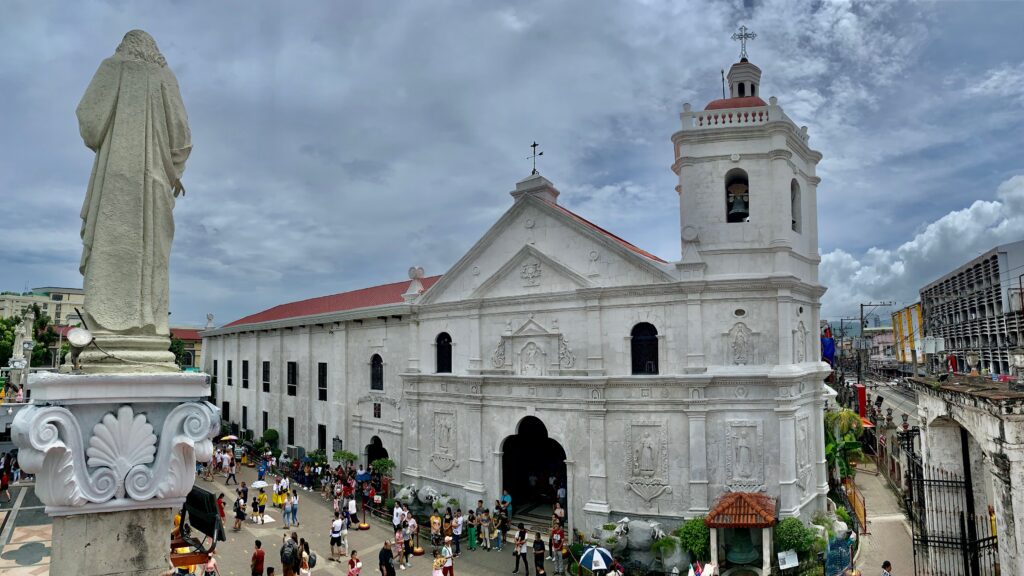CEBU CITY, Philippines – Visita Iglesia is one of the religious traditions observed every Holy Week.
It involves visiting and praying in at least 7 different churches, typically done on Maundy Thursday going into Good Friday.
Despite its widespread recognition, not all may fully grasp the meaning of Visita Iglesia.
So what do Catholics do during Visita Iglesia?
READ MORE: Holy Week 2024: A peek into 7 Metro Cebu churches for Visita Iglesia
Visita Iglesia: The meaning of visiting Catholic Churches
The Catholic Church explains that Catholics visit seven to 14 churches during Holy Week in Visita Iglesia for several profound reasons deeply ingrained in religious tradition.
Firstly, this practice allows believers to reflect on the Stations of the Cross, which depict Jesus Christ’s journey to crucifixion.
Visiting 14 churches corresponds to the 14 Stations, where individuals can meditate on each stage of Jesus’ suffering and sacrifice, deepening their understanding of the Passion narrative.
READ MORE:
Visita Iglesia: 7 churches to visit in Cebu during the Holy Week
Visita Iglesia: Seven churches in Cebu City worth visiting
Secondly, Visita Iglesia serves as a spiritual pilgrimage, that symbolizes the journey of faith. As Catholics move from one church to another, they embark on a symbolic journey through the Holy Week narrative, reaffirming their commitment to their faith.
Moreover, each church visit provides an opportunity for prayer, reflection, and repentance. By visiting multiple churches, believers engage in prolonged periods of prayer and contemplation, seeking forgiveness for their sins and renewing their spiritual commitment.
The tradition of visiting seven churches may have originated from the Seven Last Words of Jesus or the Seven Holy Wounds of Jesus, while some believers expand the practice to 14 churches to correspond with the Stations of the Cross.
However, the rituals within Visita Iglesia vary widely. Some devotees offer prayers in front of the Blessed Sacrament, others recite the Rosary or engage in deep meditation on the Passion of Christ.
Regardless of the specific practices, the intention remains consistent – to forge a spiritual connection with the events of Holy Week.
The National Shrine of St. Joseph in Mandaue City. CDN Digital photo | Mary Rose Sagarino
Origin of Visita Iglesia
Introduced to the Philippines by Augustinian missionaries in the 1560s, Visita Iglesia has become deeply rooted in the Holy Week customs of the country.
This tradition, also known as Church Visit, calls upon devotees to embark on a spiritual journey, visiting multiple churches to offer prayers and reflections.
Originally conceived as a means to honor the Blessed Sacrament, Visita Iglesia has evolved into a pilgrimage of sorts, undertaken during the Holy Week to meditate and seek penance for sins. There’s even a superstition surrounding it, suggesting that wishes may be granted upon its completion.
The origins of this practice are varied. Some trace it back to early Christian communities in the Roman Empire commemorating the suffering and death of Jesus in seven parts.
As Christianity became the official religion of the Roman Empire, the practice evolved, culminating in the visitation of seven major basilicas in Rome, believed to house the tombs of prominent martyrs.
The Archdiocesan Shrine of Our Lady of Guadalupe de Cebu is located in Barangay Guadalupe in Cebu City. | Photo from the Archdiocesan Shrine of Our Lady of Guadalupe
Visita Iglesia in the Philippines
In the Philippines, Visita Iglesia arrived with Spanish colonizers, particularly through Augustinian missionaries.
It initially met challenges due to the scarcity of churches and vast distances between settlements, but the tradition persisted and adapted over time.
Today, it remains a significant part of Filipino Catholic culture, embraced as a means to reflect on the stations of the cross during Lent.
Devotees undertake this journey with deep reverence, often extending their pilgrimage beyond the traditional seven churches to match the fourteen Stations of the Cross.
Some fervently believe that their “prayers will be granted” upon completing this extended pilgrimage.
Online Visita Iglesia
As technology advances, new platforms like Visita Iglesia Online have emerged, enabling overseas Filipinos and the infirm to participate in this tradition virtually.
Through online resources and recordings of the Passion, the spirit of Visita Iglesia transcends physical boundaries, allowing more people to engage with the tradition.
However, the Church says that it is crucial to remember that while Visita Iglesia holds deep personal significance, it should not overshadow the liturgical observances of Holy Thursday and Good Friday.
It encourages believers to participate fully in these liturgies and to practice the importance of balancing personal devotions with communal worship./ with reports from ‘Ano nga ba ang Visita Iglesia?’
